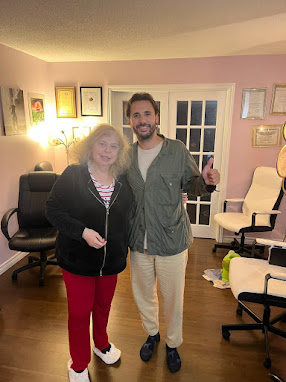Vocal Surgery for Spasmodic Dysphonia...?
Vocal Surgery for Spasmodic Dysphonia?
Against all odds...
However, let’s find out if it is bound to work…?
Recently, a Spasmodic Dysphonia (SD) sufferer’s email came to our attention - whereas the person revealed to us that he actually had undergone what’s called a SLAD-R vocal operation. He said that it did help him with the spasms; but after the fact, all of that had turned into Muscle Tension Dysphonia (MTD). That was the part he said he had desperately tried to get rid of.
However, he said: “The strength of my voice is still weak and gets weaker and raspier as the day progresses as I talk more.” “I have done some sessions with some speech therapists… I do all the drills that I’ve been taught like the neck stretch exercises, straw phonation, lip trills, etc.” “I get temporary relief… my throat doesn't feel as constricted and I notice that resonant voice on the roof of my mouth… but that feeling is very short-lived and I’m back to a strained voice…”
Now I would like to ask you, my reader; Do you think it was worth it to undergo a fairly complicated surgery and still end up with a voice disorder... of a different but related kind? In my opinion, the mission was not complete, as the person is still suffering from a little lighter - but still nasty - voice disorder such as MTD.
Granted, this surgery helped him to get rid of his spasms, but the rest of the symptoms were still present and, nevertheless, his voice, according to him, still sounds stranded (strained), raspy, and hoarse.
So, the question still remains… What was the point of surgical interference with all the possible complications which still occurred?
Let’s compare it with the non-surgical approach - not only to voice mechanics but to the person as a whole.
The fact is that the non-surgical approach is also natural, holistic, and, nonetheless, completely non-invasive and alternative. Moreover, it is, health-oriented overall and, nevertheless, definitely safe. I can assure you that the above described is definitely not a “picnic” so to speak. On the contrary, it is, no doubt, very intense, hard, however, smart work that requires integration and synergy between all of the components: Mental, physical, emotional and, of course, vocal.
The non-surgical approach, In a manner of speaking, is also quite “invasive”, but in a different way altogether. It is “manual” work and thus it is quite strenuous, however, somewhat passionate. To be able to embark on it with an MTD or, furthermore, an SD client, first and foremost, I would need to achieve a complete balance with the person who is standing in front of me. It is, however, easier said than done…
And, let me assure you, my dear reader; that also, to achieve the above, I need to straighten out quite a few other components, which usually SD and/or MTD sufferers possess a galore of!
Firstly, we would start with the sufferer's posture; The majority of people (with voice disorders or not), by my observations, have very inadequate posture… Most of them are standing with the upper back tilting backwards - while concurrently putting a lot of pressure on their lower back.
Now visualize the violin player who keeps his violin practically “upside-down”… Do you think the violin player is going to reach the right strings to play something which is actually listenable? That precedent would be very much so doubtful indeed.
In the above-described cases, the human body represents the “instrument” and the person him/herself represents the actual “player.” So if the “instrument” is being held inappropriately, no matter how good the “player” is, the music to be produced by the “player” will not be sufficient.
Similarly, it will work in the same fashion, regarding the human voice. Now once we establish the “instrument” and the “player” we actually have to teach the “player” how to extract the maximum capacity out of the “instrument” that the “player” owns.
The next thing to do is to assess both the subconscious and conscious mind and put them in alignment with each other. At the same time, we also need to identify a central line of the human body…? The fact is that the sound is a physical material body and it travels as such - in a circular direction, relatively, respectively, prospectively, to the height and width of the person’s center. In other words, the parameters would be; Vertical, horizontal, and central.
Once the above criteria are met, the real work will begin. But that is another story that we will touch on in the next blog. Just remember that the non-surgical approach is much harder to comprehend, but much more rewarding - let alone, it is completely safe. Whereas, during the vocal surgery (or any surgery for that matter), and when you are under general anesthesia, you have no idea what you are going to wake up with (or if you actually going to wake up at all - God forbid...).
However, the non-surgical approach is a “passive” approach to your voice problems (or anything else for that matter). You are actually giving your “whole life” to another human being (the surgeon) who also could make mistakes - even if they are a very experienced doctor. Also, don’t forget, that before you will “go under”, you would have to sign a disclaimer, which states that the appointed surgeon is not responsible for the outcome of your surgical procedure.
For the record, with a non-surgical approach, you will always be conscious and completely aware of what is being done and where you are heading with all of that. It is needless to say you will arrive at your destination completely safe and completely sound!
.png)


